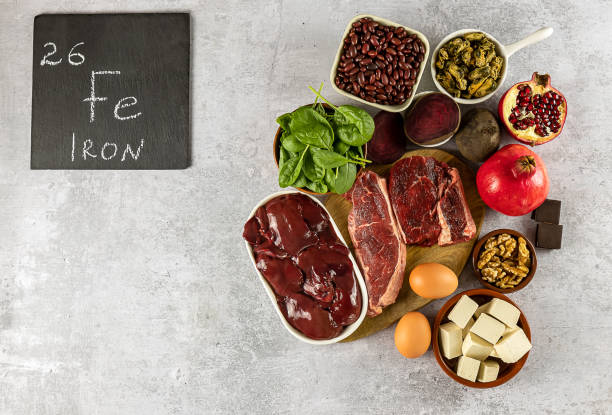Have you ever felt weighed down by constant discomfort or unexplained fatigue? Many of us struggle with persistent aches and low energy levels, often linked to chronic inflammation. Embracing an anti-inflammatory diet can be a game-changer. This approach isn’t about following a fad—it’s about making thoughtful choices that support your body’s natural ability to heal. By prioritizing nutrient-rich foods and eliminating those that trigger inflammation, you can experience a transformation in your overall well-being.
In this post, we’ll explore what to include in your daily meals and which items to skip. Whether you’re looking to soothe joint pain, improve digestion, or simply boost your energy, the anti-inflammatory diet offers a roadmap to a healthier lifestyle.
Understanding Inflammation
Inflammation is the body’s natural response to injury or infection. While short-term, acute inflammation helps heal wounds, chronic inflammation can silently damage tissues over time. This ongoing process is linked to a variety of conditions such as arthritis, heart disease, and even mood disorders. Learning how inflammation works and what fuels it is the first step in taking control of your health.
Chronic inflammation isn’t always visible, but its effects can be profound. Often triggered by an imbalance in your diet, environmental toxins, or persistent stress, inflammation can lead to cellular damage. This is where an anti-inflammatory diet plays a critical role. By choosing foods that combat inflammation, you give your body the tools it needs to recover and thrive.
The Benefits of Adopting an Anti-Inflammatory Diet
Switching to an anti-inflammatory diet can bring about noticeable improvements. Some benefits include:
- Reduced Joint Pain: Many individuals report a decrease in joint stiffness and discomfort.
- Enhanced Energy Levels: Nourishing foods help balance hormones and improve metabolism.
- Better Digestion: A focus on fiber-rich fruits and vegetables can aid in gut health.
- Improved Mood: Stabilizing blood sugar and reducing inflammation may positively affect mental clarity and mood.
- Lower Risk of Chronic Diseases: Over time, reducing inflammation can help minimize the risk of conditions like heart disease and diabetes.
By shifting your focus to whole, natural foods, you’re not only fighting inflammation but also nurturing a more resilient and energetic version of yourself.
Foods to Embrace
When it comes to an anti-inflammatory diet, the quality of what you eat is paramount. Here are some food groups to focus on:
Fruits and Vegetables
These powerhouses are rich in antioxidants and vitamins that help neutralize free radicals. Consider adding:
- Berries: Blueberries, strawberries, and raspberries are packed with anti-inflammatory compounds.
- Leafy Greens: Spinach, kale, and Swiss chard offer vital nutrients.
- Cruciferous Vegetables: Broccoli, cauliflower, and Brussels sprouts provide fiber and antioxidants.
Whole Grains
Opt for minimally processed grains that help regulate blood sugar and reduce inflammation.
- Quinoa and Brown Rice: These complex carbohydrates support sustained energy.
- Oats: A hearty option that’s easy on the digestive system.
Healthy Fats
Not all fats are created equal. Focus on unsaturated fats that promote heart health.
- Olive Oil: A staple in many Mediterranean diets.
- Avocados: Provide a creamy texture and a wealth of beneficial fats.
- Nuts and Seeds: Almonds, walnuts, chia seeds, and flaxseeds offer omega-3 fatty acids essential for reducing inflammation.
Lean Proteins
Incorporate sources of protein that are low in saturated fats.
- Fatty Fish: Salmon, mackerel, and sardines are rich in omega-3 fatty acids.
- Legumes: Beans, lentils, and chickpeas not only supply protein but also fiber.
Herbs and Spices
These not only enhance flavor but also come with powerful anti-inflammatory properties.
- Turmeric: Contains curcumin, a compound known for its potent anti-inflammatory effects.
- Ginger: Offers digestive benefits and helps ease muscle soreness.
- Garlic: Known for its immune-boosting properties.
By regularly including these foods, you create a balanced and varied plate that supports your body’s healing process without feeling restrictive.
Foods to Limit or Avoid
While the anti-inflammatory diet emphasizes nutrient-dense foods, it’s equally important to know what to steer clear of. Certain foods can trigger or worsen inflammation:
Processed Foods and Refined Carbohydrates
- Sugary Snacks and Beverages: Excess sugar can spike blood glucose levels and fuel inflammation.
- White Bread and Pastries: Highly processed grains often lack essential nutrients and fiber.
- Processed Meats: Sausages, hot dogs, and deli meats can contain additives and preservatives that promote inflammation.
Trans Fats and Unhealthy Oils
- Fried Foods: Cooking in unhealthy oils introduces trans fats into your diet.
- Margarine: Often contains partially hydrogenated oils, which can be inflammatory.
Excessive Alcohol
While moderate alcohol consumption might not pose significant risks for some, excessive drinking can exacerbate inflammatory responses.
By reducing these foods, you allow your body to focus on repairing itself rather than battling constant inflammatory triggers.
Practical Tips for Incorporating an Anti-Inflammatory Diet
Transforming your eating habits doesn’t have to be overwhelming. Here are some actionable strategies to help you make lasting changes:
- Plan Ahead: Create a weekly meal plan that includes a variety of anti-inflammatory foods. A little preparation goes a long way in preventing last-minute unhealthy choices.
- Grocery Shopping List: Keep a list of your staple anti-inflammatory ingredients. This helps avoid impulse purchases that don’t align with your health goals.
- Experiment with Recipes: Try new dishes that incorporate your favorite fruits, vegetables, whole grains, and lean proteins. Consider smoothies, salads, and hearty grain bowls as regular options.
- Mindful Eating: Take time to savor your meals and listen to your body’s hunger signals. Slowing down can help you appreciate the flavors and benefits of your food choices.
- Stay Hydrated: Water plays a vital role in digestion and overall health. Aim for at least eight glasses a day.
For those looking to refine their eating schedules alongside this dietary shift, you might find additional insights by exploring Why Meal Timing Matters for Metabolism.
Mindful Eating and Lifestyle Adjustments
Food is only one piece of the puzzle. Integrating an anti-inflammatory approach into your life also means addressing other lifestyle factors. Here are a few ideas to consider:
- Regular Physical Activity: Exercise not only reduces inflammation but also boosts mood and energy. Even a daily walk can make a significant difference.
- Stress Management: Chronic stress contributes to inflammation. Incorporate relaxation techniques such as deep breathing, yoga, or meditation into your routine.
- Adequate Sleep: Quality sleep is essential for recovery. Aim for 7-9 hours of uninterrupted rest each night.
- Environmental Awareness: Minimize exposure to pollutants and toxins by choosing natural cleaning products and supporting organic food options when possible.
- Community Engagement: Sharing your journey with friends or joining a support group can help you stay motivated and exchange valuable tips.
These lifestyle tweaks, combined with a dedicated anti-inflammatory diet, create a robust foundation for better health.
Embracing Change and Celebrating Progress
Transitioning to a new way of eating can feel like a significant change, but remember that each small step is a victory. Celebrate the progress you make, whether it’s trying a new recipe or noticing a decrease in discomfort. Over time, the cumulative effects of your choices can lead to substantial improvements in your health and vitality.
By rethinking your relationship with food, you empower yourself to make decisions that truly matter. The journey might have its challenges, but the rewards—more energy, less pain, and a renewed sense of well-being—are well worth the effort.
As you explore this path, don’t hesitate to reach out for more resources and inspiration on holistic health. For comprehensive insights into mindful living, visit venzec.icu.
Adopting an anti-inflammatory diet is not just about a temporary change—it’s a commitment to a healthier, happier life. By embracing whole, nourishing foods and eliminating those that cause harm, you set the stage for a vibrant future. Enjoy the process, trust your body, and take pride in every positive choice you make along the way.









